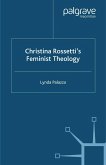Using feminist theory and examining films that describe women artists who see others through the lens of feminist theology, this book puts forward an original view of the act of seeing as an ethical activity - a gesture of respect for and belief in another person's visible and invisible sides, which guarantees the safekeeping of the Other's memory.
"Ulrike Vollmer has written a deeply interdisciplinary work which contributes creatively to thinking in feminist theology, art theory, and the developing field of film and religion. In the context of detailed, technical but highly readable studies of three films about (and by) woman artists, she revisits both the philosophical and cultural issues in seeing and being seen, and explores what it means for a woman to 'exercise the freedom of the eye'. This is a truly creative book which deserves to be widely read and studied." - David Jasper, Professor of Literature and Theology, University of Glasgow'Gender and religion are both, in part, constructed through the mediating visual performances of television, drama, art, and film. Ulrike Vollmer performs a critical task in the ongoing scholarly relation between religion and film by intersecting the religion-film relation with feminist film theory, paying careful attention to the ways the camera produces gender. In so doing, she articulates a vital, interdisciplinary arena in which humans see gender on screen, and what we might be able to do to see differently.' - S. Brent Plate, editor of Religion, Art, and Visual Culture and Representing Religion in World Cinema








